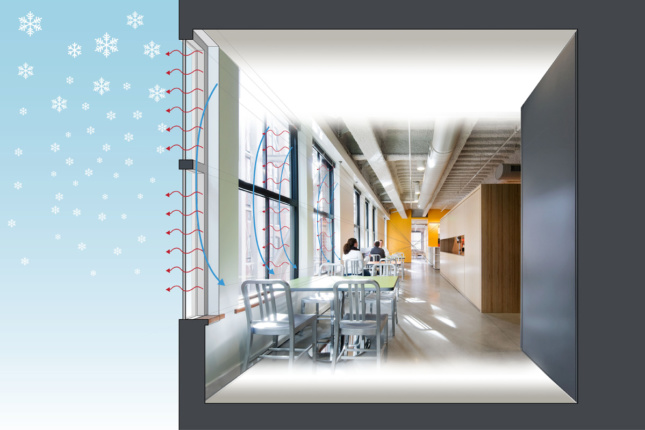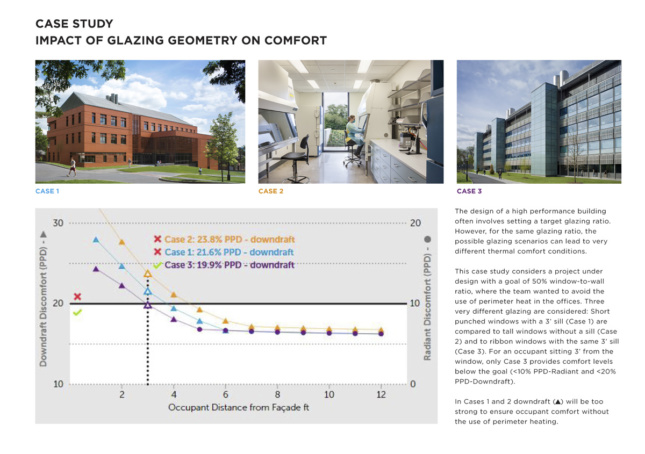Boston-based Payette recently unveiled a publicly available web-based tool that allows designers to evaluate glazing design and performance with respect to occupant thermal comfort. This Glazing and Winter Comfort Tool, developed by an in-house team of building scientists and designers, received an honorable mention at AIA’s recent TAP/CAA (Technology in Practice) Innovation Awards.

- Architects
Payette - Team Involved
Alejandra Menchaca, PhD, LEED AP – Senior Building Scientist / Associate; Lynn Petermann, AIA, LEED AP – Associate; Vera Baranova – Designer; Christopher Mackey – Building Scientist - Awards
2016 AIA TAP (Technology in Architectural Practice) Innovation - Location
web-based - Date of Completion
2016 - System
Envelope performance tool - Topics
Practice-based Research; Academic; Applied Technology Development
The project comes at a time of increased interest in facade transparency, energy efficiency, and occupant comfort. Alejandra Menchaca, senior building scientist / associate at Payette and lead researcher on the project, said the project was initiated as a response to the challenges of quantifying how glazing performance and geometry will affect the need for supplemental perimeter heating early in the design process. “What if the design team could understand, as early as schematics, which facade properties negatively or positively impact occupant comfort? What if there was a way to avoid the use of perimeter heat by selecting the right glazing geometry and performance?”
To achieve this goal, the project team modeled the tool after existing scientific research, and the firm’s experience with high-performance building design. The result is a simple interface that educates the design community on thermal discomfort during wintertime. The tool produces graphic charts and diagrams based on user-controlled variables such as facade geometry, glazing performance, target interior conditions. It also allows design concepts to be further optimized through advanced options that take into account specific details such as R-value of the facade walls, exterior air speed, and even the insulating value of occupants clothing. This array of variables can be saved as a “case” option and compared with two other configurations for analysis.

Beyond this level of interactive design analysis, the tool educates designers on types of thermal discomfort among building occupants and provides links to further reference information. The tool was released in coordination with a firm-wide R&D showcase, which Payette described as a “behind-the-scenes” look at research and development processes and outcomes of our findings. In addition to their Winter Glazing and Comfort tool, the office shared models produced through their fabrication lab, advances in virtual reality, and additional building science research.

Payette’s office shared testimonials from design professionals testing out the tool during their showcase. “This helps me understand the trade-offs with fenestration quantity, configuration, glass lay-up (and ultimately, cost of the fenestration) with comfort for the occupants of the building,” an engineer testing the tool said. “The graphic output is quickly understandable and conveys the important results to decision makers who may be unfamiliar with much of the conceptual underpinning but recognize that comfort is key to occupant satisfaction. Having this tool available imposes quantitative rigor on comfort, which combined with quantitative daylighting analysis leads to a rational basis for fenestration design.”

The publicly accessible tool can be accessed on Payette’s website here.




